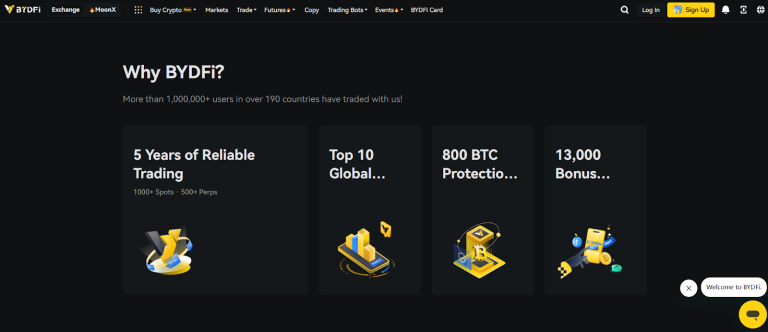Maruti Suzuki Shares Dip 3% Despite Strong October Sales and Solid Q2 Results
We saw something unusual this week: Maruti Suzuki’s share price slipped by about 3%, even though the company delivered impressive numbers. In October 2025, the carmaker posted its highest-ever monthly wholesales, dispatching around 220,894 units. And in its Q2 result,,s the business showed solid growth in key areas, yet investors pressed the sell button anyway.
So what’s going on? We’re entering a moment where strong fundamentals meet market worry. On one side, the numbers are positive. On the other,, the shares reacted negatively. We will study the reasons behind that reaction, unpack the data, and take a clear look at what it means for the company’s near-term outlook.
Quick Snapshot: Stock Movement
Maruti Suzuki’s shares dipped around 3% following the Q2 and October sales announcements. The broader auto index in India also showed signs of pressure, as investors weighed macro risks. Profit booking appears to be one trigger; after a strong run, some investors may be taking gains. Also, concerns such as input cost inflation or a slower recovery in rural demand may have played a role. We’ll examine these in detail later.
October Sales Performance: A Strong Month
October 2025 was a standout month for Maruti Suzuki. The company reported total sales of 220,894 units, the best monthly tally in its history. Domestic sales alone touched around 180,675 units, up strongly compared with the same month a year ago. Much of this surge is thanks to the festive season in India (Dussehra, Diwali) and also because of the rollout of new tax norms (GST 2.0), which reduced vehicle prices and boosted customer interest.
Segment-wise, Maruti’s small cars and entry-level vehicles saw strong demand, an indication that value-focused buyers returned in force. The company also pointed out a rise in bookings, especially after the GST reform. For exports, while Maruti sold fewer vehicles than the domestic market growth, the domestic strength helped offset weaker overseas numbers.
In short, October was a very good month for volume and showed that Maruti Suzuki is leveraged to both a strong festive cycle and favorable reforms.
Q2 Financial Highlights
In the quarter ended September 2025 (Q2 FY26), Maruti Suzuki reported a standalone net profit of approximately ₹3,293.1 crore, up about 7.3% from about ₹3,069.2 crore in the same quarter last year. Revenue from operations rose by about 13.16% year-on-year to roughly ₹42,100.8 crore from about ₹37,202.8 crore. However, operating (EBITDA) margins edged down slightly; the margin stood around 10.53%, a slight drop from a year ago, as input costs and other expenses rose.
Sales volume growth was more modest: the company sold about 550,874 units in the quarter, showing only around 1.7% growth to overior year. So while the topline and profit numbers were good, the margin pressure and slower volume growth are key areas of attention.
Why Did the Stock Fall?
Given the positive numbers, why did the stock fall by ~3by %? Here are a few possible reasons:
- Profit-booking: After strong past performance and festive strength, some investors might have taken gains, driving the dip.
- Input cost pressure: Rising steel, aluminum, and logistic costs and a push into newer segments (EVs/hybrid) imply cost pressures ahead. Even if the market decline is small now, markets tend to focus on the risk.
Indeed, Marthe Gin’s dip in Q2 indicates cost pressure. - Mixed signals in volume growth: While October was stellar, overall Q2 volume growth for Maruti was modest (~1.7% YoY), and some models faced weaker demand.
Markets often look for strong volume momentum, not just one good month. - Competition and shift in product mix: The Indian auto industry is moving toward SUVs and EVs. Maruti Suzuki has strong small-car roots, but the shift means they must invest and adapt. Analysts may be cautious about how fast Maruti can transition.
- Valuation expectations: Sometimes, even good results disappoint relative to high expectations. For instance, margins or future guidance might have been weaker than hoped.
Brokerage notes after the results suggested a cautious stance.
In short, the market seems to be saying: yes, the numbers are good, but what about the risks and what about the future growth story?
Industry Context
The Indian passenger-vehicle industry in OcOctober025 benefited from two big tailwinds: a strong festive season and the implementation of GST 2.0, which reduced tax on small cars and improved affordability. This helped many brands record their best-ever monthly sales. For Maruti, that translated into a record October. At the same time, the shift in consumer preference is clear: SUVs and higher-end models are gaining share, and EV/hybrid penetration is increasing. Maruti must balance its legacy in small cars with these trends.
Moreover, exports are becoming more important for Indian auto makers, as domestic market growth is getting challenging. Maruti has already flagged its ambitions in this area.
So the backdrop is favorable volumes in the short term, but the structural change in the industry puts pressure on product strategy and cost management.
Forward Outlook for Maruti Suzuki
What lies ahead for Maruti Suzuki?
- New model launches: The company has a pipeline of SUVs, hybrids, and entry into EV segments. These launches will be important to maintain growth and margin.
- Export growth: Maruti aims to grow exports significantly, which can help dilute domestic market cycle risk.
- Festive tailwinds: The next months (Nov/Dec) are another festive period in India; if demand remains strong, volumes could remain elevated.
- Costs & margins: Key to watch will be raw material inflation, logistic cost increases, and how Maruti manages this while also funding R&D for EVs/hybrids.
- Rural demand and financing: A large part of India’s auto growth depends on rural/upcountry demand and ease of auto-finance for first-time buyers. If these lag, growth could be impacted.
- Competition/EV shift: Maruti must stay competitive against rivals (domestic and international), especially in SUVthe /EV segments.
We believe that if Maruti plays these areas well, it can maintain its leadership. But execution risk is real.
Investor Takeaway
Here are key points for investors in Maruti Suzuki:
- The short-term dip of ~3% does not appear to reflect a business weakness; rather, it reflects market caution and profit-booking.
- Long-term fundamentals remain solid: historic brand presence, strong volumes in October, strong Q2 revenue/profit growth.
- The valuation either demands growth delivery or margin improvement ahead. Investors should watch upcoming product launches, margin trends, nd export momentum.
- Risks: cost inflation, slow rural demand, competitive/EV pressure, product-mix shift.
- For an investor with a horizon of 2-3 years, the thesis for Maruti (as India’s largest carmaker) remains valid, provided execution is good.
Conclusion
Maruti Suzuki has shown strength: record October sales, robust Q2 revenue & profit growth. The near-term dip in share price is more about investor caution than a failure of performance.
In a business where volumes matter and product cycles take years, what counts is how well Maruti executes on its future plans: new models, export growth, margin control, EV/hybrid entry. We will keep a close eye on those levers. In the meantime, the company is well-positioned, but the next phase will be about delivery and adaptation in a changing auto market.
FAQS
Maruti’s share rises because people trust its strong sales and profits. The company launches new cars, grows in the SUV and hybrid market, and keeps winning customers. Investors feel confident.
Some experts say Maruti may be a little overvalued because the price is already high. This means investors expect strong future growth. Still, many trust its long-term plans.
Maruti’s share sometimes drops when investors take profit, even after good results. Higher costs, strong competition, or slow demand in some areas may also cause short-term selling.
Disclaimer:
The content shared by Meyka AI PTY LTD is solely for research and informational purposes. Meyka is not a financial advisory service, and the information provided should not be considered investment or trading advice.






